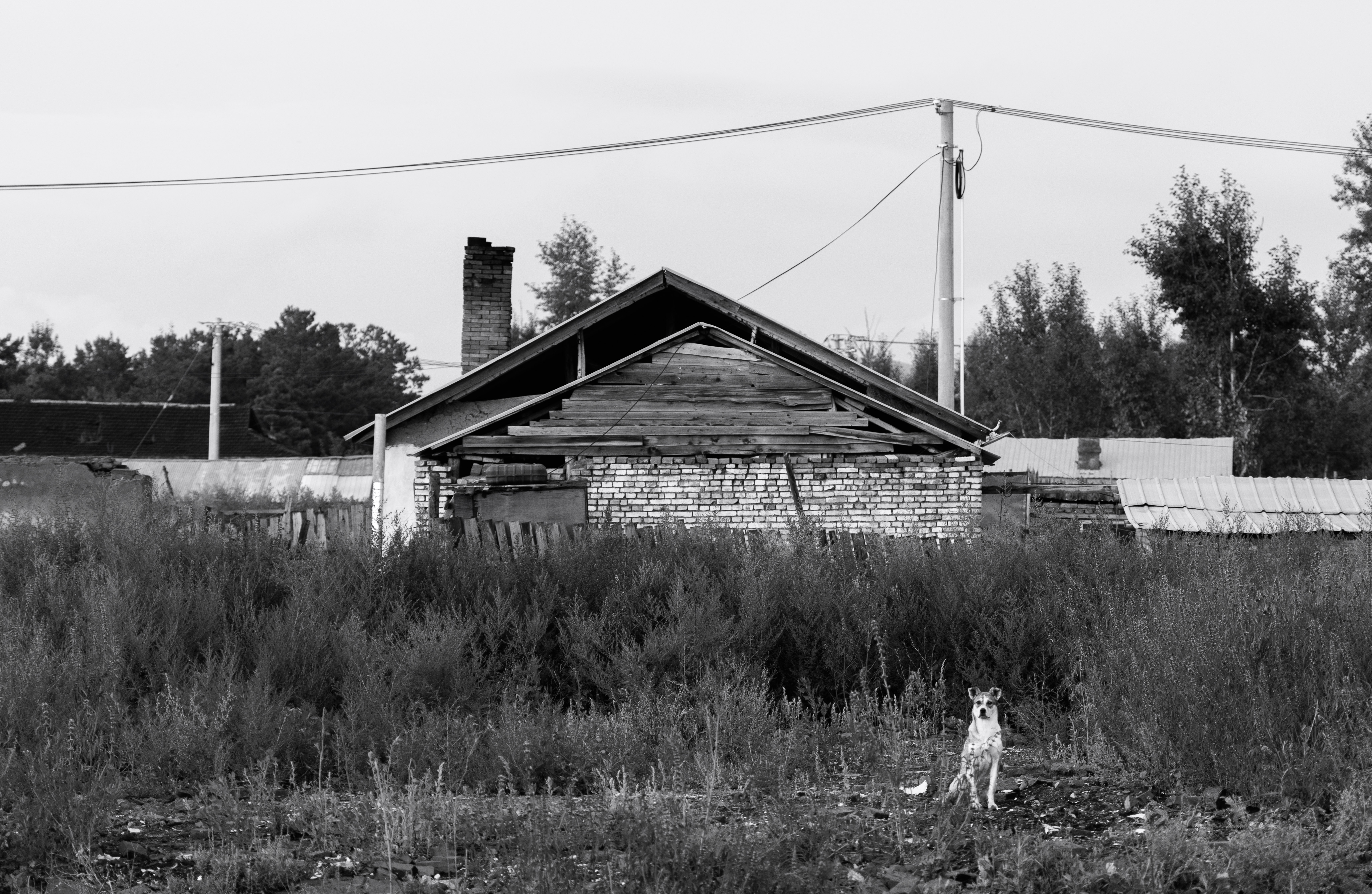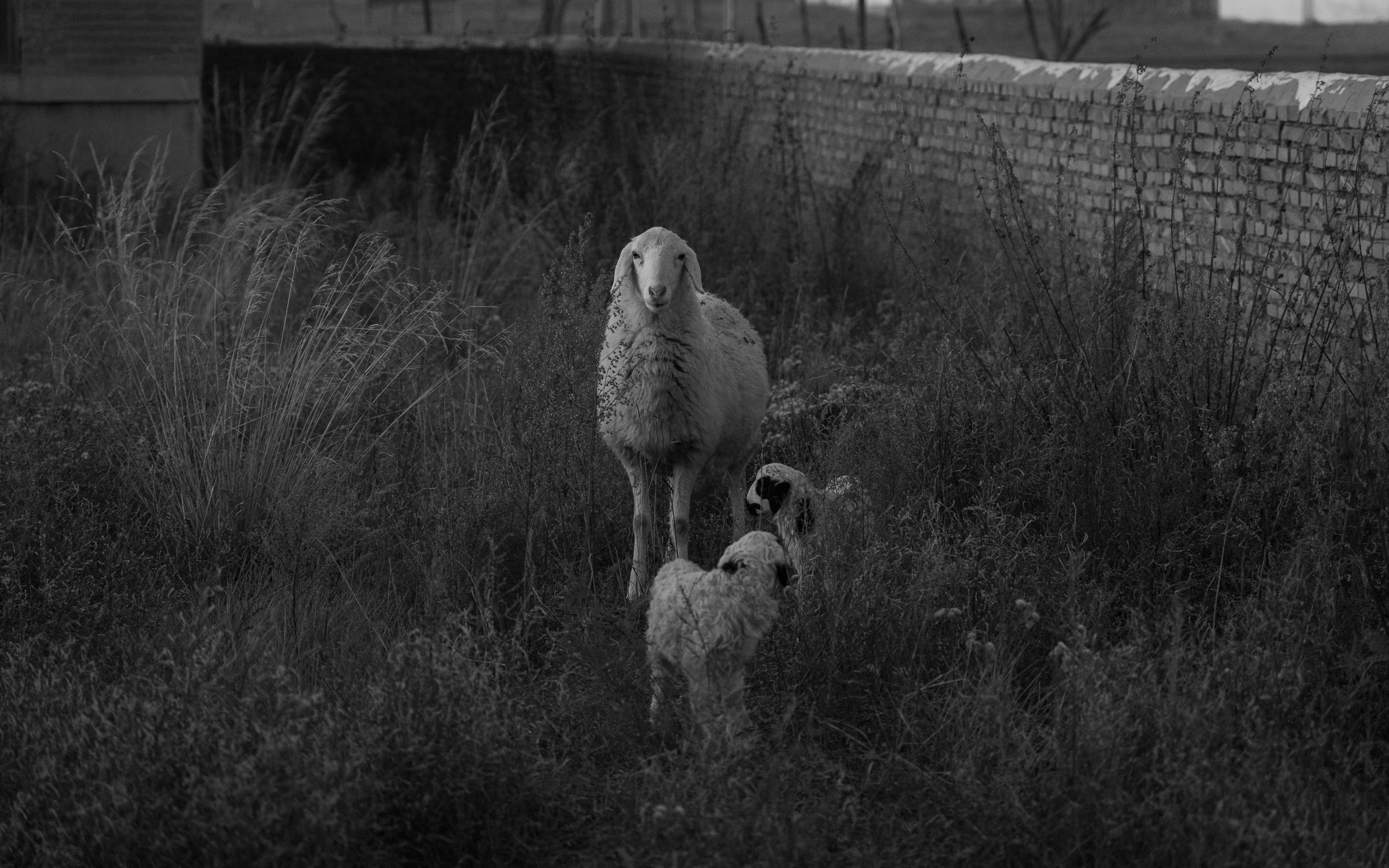Favorites, with Reasons
2025-07-24
I’ll be sharing some of my favorite photos here to help myself identify the common threads between them, so I can better understand what kinds of photos I like and want to capture.
 House & Dog
House & Dog
I once tried to interpret this photograph from a symbolic perspective.
Unlike the other images I took during that period, this one seemed to slip beyond my control after I had shot it and done some light post-processing. At times, I even wonder: Did I truly take this photo, or was I merely a vessel—like the camera itself—through which it presented itself to the viewer? A stray dog, a crumbling house, tangled grass, and utility poles and wires that serve as metaphors for modern civilization... The dog’s position even suggests a sense of watchfulness, as if someone (or perhaps a family) still lives there—or once did—and it’s been standing guard ever since.
But that doesn’t fully explain the particular feeling this photograph gives me. For me, viewing it is, first and foremost, an experience that pierces through my own sense of being the creator. It’s as if I were just relaying something rather than creating it—as though the scene had existed, yet not perpetually, but solely in that fleeting instant, from that exact angle, and I was simply the one to reveal it, none of the compositional, exposure, or contrast theories I had in mind at the time seemed to resonate with this notion, I didn’t even know what to call this photograph. Still, it planted a deep seed for what later became my search for a quiet, observational, and nuanced style.
To this day, it remains one of my favorites.
 Sheep
Sheep
This is another photo that, once processed, felt like it slipped beyond my control. It continues and expands on my reflections on House & Dog. Both images evoke a similar sense of stillness, nostalgia, and silence. But this one, in particular, also brings with it a faint association with death and a subtle sense of dread.
In my own theory of photography, I see this as a form of “solidification”: the content of the photo clearly captures only a single moment, yet that moment somehow seems as if it could persist for a long time in the real world. Take this Sheep, for example. The sheep looked at me for just an instant, but after I took the photo and kept staring at it, it felt as if, in reality, it had been staring at me all along. In other words, it is a continuous prolongation in time, or rather, a displacement in the viewer’s interpretation. And perhaps part of the unease this photo gives me comes from this: if a sheep were truly to stare at me like that, I would find it quite unsettling.
I once wrote in my notes:
In this kind of “solidified” photo:
- It seems that anything obviously moving, or about to move, should be avoided, as it disrupts the sense of stillness—cars, flowing traffic, birds in flight, or large groups of people, for example.
- At the same time, the scene shouldn't be entirely static either. Something capable of moving, but not moving, can actually reinforce that stillness. A house, for instance, doesn’t move, but a sheep can—and in this case, it didn’t.
Now I would see it as a pursuit of longer temporal suspension, or using some form of stillness to compress time as a dimension within photos. Just as color conveys mood, angle conveys stability, and depth of field conveys presence, I believe that “the density of time” is one of the sources of a photo’s “soundless” expressiveness. And it seems that few kinds of photos are capable of achieving this.
But even I find myself wondering, “Isn’t that a strange thing to say?” After all, every photograph captures a frozen moment—each one is silent and still. So why does this image of the sheep feel so distinct to me? If the aim is to depict a subject that could move but didn’t, and still conveys emotion, couldn’t a silent human figure serve that purpose just as well?
After some reflection, I believe it doesn’t quite work. “Unreadability” appears to be a key factor. When you face a person, you can read their eyes, gestures, and even sense their thoughts. But with animals, you can’t do that—most of the time, we have no idea what’s on their minds. Of course, sometimes we can guess their mood, but I find their blank expressions and silence far more difficult to interpret.
This line of thinking also led me to seek inspiration from plants, which seems to align with some ideas mentioned by Nakahira Takuma in his book Why an Illustrated Botanical Dictionary. However, after spending some time photographing plants, I came to realize that plants are inherently silent, so it might be animals that better provide this sustained—and sometimes somewhat uncanny—sense of suspension.
When revisiting my own photos that evoke a feeling similar to House & Dog, I once described my perspective as that of a disembodied soul, which therefore observes the world in a way that is engaged and penetrating, yet always untouchable. But following the train of thought sparked by this Sheep, maybe I’m not a special kind of observer, nor have I used a unique way of seeing. But rather, under certain conditions, it’s the subject itself that has given me a special kind of feeling...